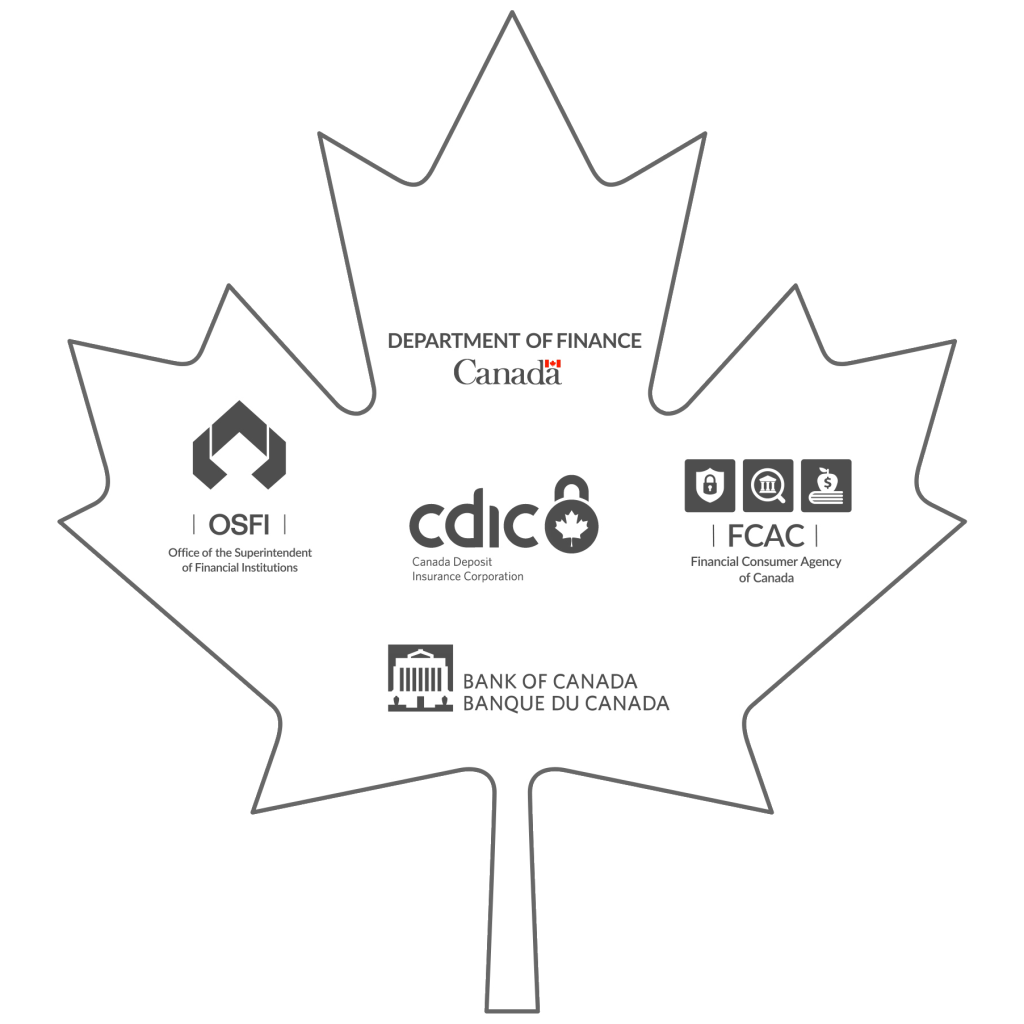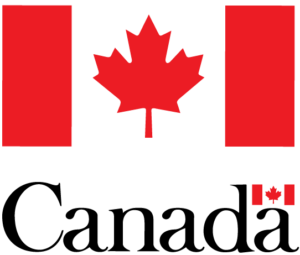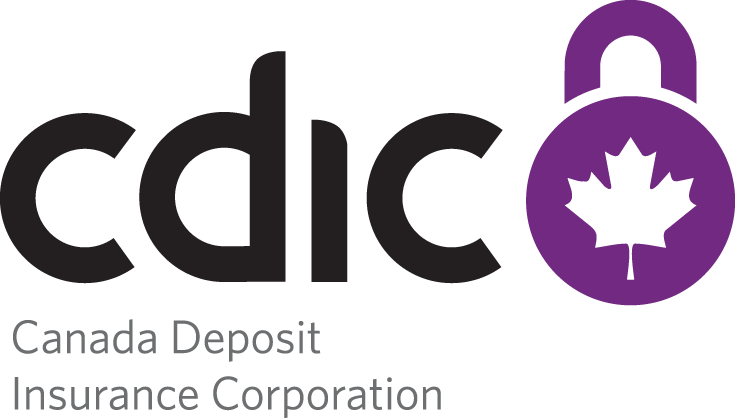Financial safety net
Canada’s financial system is one of the safest and strongest in the world. This is due in part to effective financial sector policy, regulation and supervision, liquidity support, deposit insurance, recovery and resolution strategies and consumer protection and financial education.


Parliament of Canada
Minister of Finance
These organizations comprise the Financial Institutions Supervisory Committee to share information on matters relating to the supervision of federally regulated financial institutions. These same partners also form the Senior Advisory Committee, which is a discussion forum for financial sector policy issues, including financial stability and systemic vulnerabilities.
Each of these federal partners works with provincial regulators and international standard setting groups. This work helps to shape the development of regulatory and supervisory rules and standards that contribute to continued financial stability for Canadians.

Department of Finance Canada
Stewardship of the Canadian economy
The Department of Finance Canada is responsible for the overall stewardship of the Canadian economy. This includes preparing the annual federal budget, as well as advising the Government on economic and fiscal matters, tax and tariff policy, social measures, security issues, financial stability and Canada’s international commitments.
Tools
- Federal budget
- Federal transfers to provinces and territories
- Tax policy
- Financial sector policy
- International trade and finance policy
For more information, visit the Department of Finance Canada.

Office of the Superintendent of Financial Institutions
Regulation and Supervision
OSFI is an independent federal government agency that regulates and supervises banks, insurance companies and private pension plans in Canada to determine whether they are in good financial condition and meeting their regulatory and supervisory requirements.
OSFI’s job is to regulate and supervise institutions so that banks are able to make money available to Canadians, so that insurance companies can pay out their policyholders, and so that pension plans can continue to make payments to retirees.
Tools
- Domestic Stability Buffer
- OSFI Guidelines (capital adequacy, liquidity, accounting, etc.)
- Intervention powers
- Industry Notices
For more information, visit the Office of the Superintendent of Financial Institutions.

Bank of Canada
Central Bank
The Bank of Canada is the nation’s central bank, with a mandate to “promote the economic and financial welfare of Canada,” as defined in the Bank of Canada Act.
The Bank has five core functions. It implements Canada’s monetary policy, working to maintain the value of money by keeping inflation low, stable, and predictable. Additionally, the Bank promotes safe and efficient financial systems, designs and distributes Canada’s banknotes, acts as fiscal agent for the Government of Canada, and oversees payment service providers under the Retail Payment Activities Act.
Tools
- Policy interest rate
- Provision of liquidity to the financial system
- Provision of liquidity to individual financial institutions
- Oversight and resolution of financial market infrastructures
- Analysis and research on financial stability
- Coordination with international policy makers and G7 central banks
For more information, visit the Bank of Canada.

Canada Deposit Insurance Corporation
Deposit insurance
CDIC is a federal Crown corporation. Established in 1967, CDIC protects deposits which, in turn, contributes to the stability of the Canadian financial system. CDIC safeguards over $800 billion in deposits at more than 80 member institutions. As a resolution authority, CDIC is responsible for handling the failure of any of its members, from smallest to the largest.
Members include banks, federally regulated credit unions as well as loan and trust companies and associations governed by the Cooperative Credit Associations Act that take deposits. CDIC is entirely funded through premiums paid by member institutions.
CDIC has resolved 43 member failures affecting some 2,000,000 Canadians. No one has lost a dollar of deposits under CDIC protection.
Tools
- Deposit protection for Canadians
- Promotes awareness of deposit protection
- Handles the failure of member institutions
For more information, visit the Canada Deposit Insurance Corporation.

Financial Consumer Agency of Canada
Protect consumers: supervise and educate
FCAC is an independent federal agency that protects the rights and interests of consumers of financial products and services. The Agency’s mandate is to strengthen the financial literacy of Canadians and supervise the compliance of federally regulated financial entities, including banks, with their legislative obligations, codes of conduct and public commitments. FCAC monitors trends and issues affecting financial consumers and works to strengthen the financial literacy of Canadians through research, education and collaboration with stakeholders across the financial ecosystem.
Tools
- Supervision and Enforcement
- Supervision Framework (guidance, compliance agreements, enforcement)
- Commissioner Decisions and Administrative Monetary Penalties
- National Financial Literacy Strategy
- Research, studies and industry reviews
- Consumer information, tools and resources
For more information, visit the Financial Consumer Agency of Canada.
